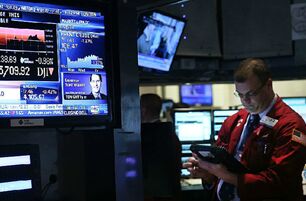2018年新兴市场面临严峻考验
|
Emerging markets this year have been driven by the winds of a co-ordinated recovery in economic growth, with trade growing strongly, corporate earnings robust and interest rates still low on average across the EM universe. But whether that environment will propel another year of strong gains for EM assets is another question. The big risks include the potential for a stronger US dollar and a China economic slowdown that could hit global demand for resources, several analysts say. “The year 2018 may well be the toughest test yet for EM assets since the 2013 taper tantrum,” says David Hauner, head of economics for eastern Europe, Middle East and Africa at the Bank of America Merrill Lynch in London.
“The clear and present danger is the combination of US monetary tightening and fiscal stimulus, which could conspire to push US nominal and real yields higher,” Mr Hauner adds. During the 2013 taper tantrum, EM assets were clobbered by a surge in US Treasury bond yields brought about by the Federal Reserve signalling a desire to reduce the amount of money being pumped into the financial system. The concern now, according to Mr Hauner and other analysts, is that the proposed US tax reforms — if adopted — could trigger a resurgence in corporate capital flooding back to the America, thereby driving up the value of the US dollar. When the dollar appreciates against EM currencies, funds tend to flow out of EM assets and gravitate towards their dollar-denominated counterparts. However, opinion is divided on how the proposed US tax reform may play out. Arvind Rajan, head of global and macro at PGIM Fixed Income, a fund with $695bn in assets under management, says he does not expect the reforms to prompt a drastic change in US monetary policy as the Fed’s preferred price gauge remains well below 2 per cent. “The passage of the tax bill would marginally increase the number of hikes that we should expect but I don’t expect the Fed to strike out in an entirely different direction,” he says. The other main cloud hanging over the generally encouraging outlook for EMs is China’s incipient economic slowdown. Consensus Economics, a private group that polls economists projections, forecasts China’s GDP growth next year to moderate to 6.4 per cent, down from the official 6.9 per cent posted in the second quarter of this year. “Growth momentum [in China] has started to ease since the third quarter and we believe the slowdown is likely to be a sustained trend in 2018,” says Shen Jianguang, chief economist at Mizuho Securities in Asia. “This is mainly the result of policy tightening, including financial deleveraging, anti-pollution controls and new curbs on the overheated housing market.’’ China’s slowdown is likely to be expressed mainly in a cooling of its real estate market, with October numbers already showing a significant ebbing of growth momentum in property investment, new home starts and sales. Nevertheless, consumer spending is likely to remain strong next year as incomes continue to rise strongly and the willingness to consume among the younger generation stays buoyant. So if both of the big risks for EMs — the Fed and a Chinese slowdown — remain contained, investors may feel liberated enough to concentrate on other more positive narratives, say analysts. “Basically, market turbulence in the first half of the year should be seen as a buying opportunity for emerging markets,” Mr Hauner says. Chief among these during 2017 has been a strong corporate earnings picture. Earnings per share growth of the companies included in the MSCI EM index — the leading benchmark for EMs equities — are on course to rise 22.4 per cent this year, according to BofA figures, with some countries such as South Korea, Turkey and Mexico showing a strong outperformance with 53.3 per cent, 40.5 per cent and 26.1 per cent, respectively. BofA is predicting EPS growth to moderate to 12.7 per cent next year, still a robust performance in spite of the obvious slowdown from this year. India, South Africa, China, Indonesia and Chile are among the predicted outperformers next year, the investment bank says. In terms of industry sector, earnings are expected to be strongest in consumer discretionary, healthcare and information technology. |









